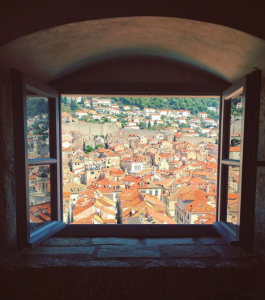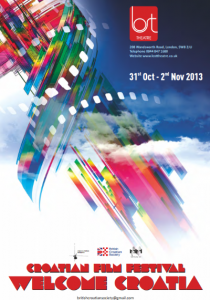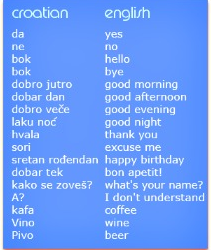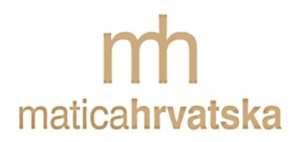As a country, Croatia has experienced a number of different periods within its history. The result of these periods has been the creation and sustenance of a rich cultural heritage that they are now able to draw upon in order to entertain tourists. Below are just some examples of that rich cultural heritage.
Croatian History

History of Croatia is one that has been full of conflicts and it is a history that you would not think of just by looking at the country itself. Unlike many other countries with bloody histories, there are few points of evidence left regarding that same history in Croatia and much of the country has been transformed into a stunningly beautiful landscape capable of drawing millions of tourists each year.
The war conflicts of Croatia start in 1918 with the fall of the Austro-Hungarian Empire, during which time Croatia teamed up with Serbia and Slovenia in order to form the independent state of Yugoslavia. Under a brutal dictator known as Marshal Tito, this political entity was held together for a very long time as a Communist dictatorship. In 1991 however, Croatia eventually declared their independence from Yugoslavia, something they obtained in full in 1995 after four years of conflicts.
Dubrovnik

If you are interested in visiting a city that represents one of the epitomes of Croatian culture, then Dubrovnik is definitely that city. Located on the Adriatic Sea, Dubrovnik became a city to rival Venice during the middle ages and for that reason has been declared a UNESCO world heritage site in modern times. It remains one of the most beautiful cities within Mediterranean Europe and is definitely the pride and joy of Croatian tourism.
Music
Croatian music is quite beautiful and the locals are very good in their understanding and appreciation of quality music. Because of the general boom of classical European music within Western Europe during the renaissance, places like Croatia are often very underrated in terms of what they can produce in music. If you would like to experience Croatian music, then you can definitely do so through patronage of one of the major music festivals available in the country. A good example of this is the Dubrovnik Summer Festival, which includes both music and theatre events and takes place every year from July 10 to August 25.
ARCHIVES
The Republic of Croatia has one central Croatian State Archives based in Zagreb and twelve regional historical archives.
Historical Monuments
There are many testaments to Croatian history scattered all over the place and many of these can help you in your study of Croatian culture. The port city of Split is one such place and it is one of the few places in Croatia that contains ruins from the times of the Roman Empire. Along those same lines, the port city of Pula contains a genuine Roman Arena.
FILM

Croatian film is also a relatively large industry, although the vast majority of the films they produce tend to be on par with independent productions in the western world. The quality of the films is still excellent though, largely on the backs of the acting and writing that takes place. You can actually visit the Libertas Film Festival in Dubrovnik every year from August 25 to August 30 to see the best of the best in Croatian films. If you were strictly interested in a cultural tour in fact, you can book a trip to Dubrovnik in the last two weeks of August and take it all in.
In the 1970s the Zagreb Academy of Drammatic Arts (ADU) started teaching film making and the Faculty of Philosophy offered courses in film theory and history. The Croatian Film Archive was founded in 1979, and in the late 1980s Croatia produced a two volume film encyclopedia.
Croatia House – Promoting Croatian Visual and Preforming Arts
LANGUAGE
The Croatian language belongs to the South Slavic branch of the Slavic group of languages. With its written standard developing in the 11th century from a number of Croatian dialects, Croatian was one of the first languages that emancipated themselves from the common Slavic substratum.
Since the early Middle Ages the Croatian language has been developing under characteristic influences of the western culture and civilization, both in its Latin-Mediterranean and Pannonian-central European forms. However, the most important element has been an unyielding desire by the Croat people to preserve their cultural,political, linguistic and other forms of authenticity. In the 14th and 15th centuries all the Croat-inhabited regions called their language by the same name (Slavic, Illyrian, Croatian), showing they were fully aware that the Croatian language encompassed the shtokavian, chakavian and kajkavian dialects. Thus already in the 16th century, Croats started publishing grammars and dictionaries of their language. That was especially intensified in the next three centuries. In the 17th and 18th centuries, shtokavian, chakavian and kajkavian authors were all keenly aware that they wrote in the same language, although they called it by different names. Due to the highly developed language of the Dubrovnik authors, who wrote in the Jekavian variant of the shtokavian dialect, in the mid-19th century it became a standard in all the Croat-populated areas, superseding an already developed linguistic standard.

By the 19th century the standard language in Serbia was a variant of Church-Slavonic (Serb-Slavonic, Russian-Slavonic). However, when V.S. Karadzic, prompted by Slovene Jernej Kopitar, adopted neo-shtokavian dialect as Serb literary standard, basing it on Croatian dictionaries and grammar books, that bolstered expansionist ambitions of the newly emancipated Serbian state.
Throughout its history the growth of the Croatian language has been often obstructed and sometimes even repressed, due to the fact that for nearly nine hundred years Croats lived under foreign rulers with varying degrees of autonomy.
An especially difficult period started in 1918 when Croats joined other South Slavic nations in the Kingdom of Yugoslavia, believing that it would help them protect their national interests. However, the new state failed to meet Croat expectations on all accounts. Thanks to their advantages (the largest and most widely dispersed people, whose capital was the capital of the new country) and to the reinforcement of the state administration, the military, the police and the gendarmerie, the Serbs immediately got the upper hand in the new state.
Both the Kingdom of Yugoslavia and the subsequent socialist Yugoslavia did not stop at anything, including repressive measures, to prove that the Croats and Serbs spoke the same language. Yet, in spite of all that, the Croats managed to preserve their language and never stopped calling it by its original name. A proof of the century-long tradition of the Croatian language is the 11th century Bašćanska ploča tablet, the oldest preserved monument in the Croatian language. Although Croatian and Serbian standard languages relate to each other in a way that has no analogy worldwide, one can say that they are just as different as Dutch and German, Norwegian and Danish, and Slovak and Czech. By the same token, just as the democratic Spain after the fall of fascism recognized Galitian as a language different from Spanish and Portuguese, thus Croatian and Serbian can be considered two different languages due to their separate cultural histories and functional differences.
Yet, traditional genetic linguistics refused to recognize autonomy of certain languages only because they were not spoken by independent nations (such was the case with Catalan, Galitian, Slovak). Occasionally, such attitudes persisted long after a nation became independent (such as Norway). On the other hand, modern social linguistics has established that differences between languages cannot be judged only by the standards of genetic linguistics but by taking into consideration cultural, historical, social, political, economic and psychological factors and, first and foremost, awareness by the speakers about the uniqueness of their language. Thus, every language is an original and unrepeatable combination of quantitative, qualitative and functional characteristics. Namely, languages differ from each other in different ways.
The diplomacies of the first and the second Yugoslavia, dominated by Serb expansionists, especially insisted on the hybrid tag “Serbo-Croat” (“Serbo-kroatisch,” “serbo-croate,” “Serbo-Croatian,” etc.). However, the Croats adamantly opposed such classification of their language. Thus, in spite of the oppression by the communist regime, in 1967 they publicly denounced it in the Declaration on the Name and the Status of the Croatian Language, which was signed by all relevant Croatian cultural and scientific institutions, and endorsed by thousands of Croatian intellectuals and cultural workers. It was thanks to such effects that the second Yugoslavia (1945-1991) published all the federal documents in four different versions: Slovene, Croatian, Serbian and Macedonian, which were initially even called by those names.
It has been proved beyond all doubt that the Croats have been around as a nation for 1,300 years and that for the past 1,000 years they have had documents and literature in their native tongue.
THEATRES
Judging by the remains of Roman theatres in Salona (Solin), Vis and Pula, the first theatres in present-day Croatia existed already in Antiquity. Later on, medieval liturgical plays were performed in churches or on the squares in front of them.
Today Croatia has national, municipal and private theatres. The film culture around theaters in Zagreb is well developed.
MUSEUMS AND GALLERIES
The predecessors of Croatian museums were private collections in the mansions of the nobility and residences of scholars and collectors. The collections reflected their owners’ interest in science and art.
Today, the average annual production of Croatian museums is about 250 titles.
PUBLISHING
The first book published in Croatia was a glagolitic missal dating from 1483, while the first Croatian printing house was in Kosinj, where the breviary was published.
In 1997 Croatia had 2,026 registered publishers, of which 1,856 have published one or more books. In the period between 1990 and 1997, the number of publishers in Croatia increased fivefold.
Since 1992 Croatia has been part of ISBN, International Standard Book Number, and since 1993 all Croatian publishers have been listed in the Publishers International ISBN Directory.
MATICA HRVATSKA

Matica Hrvatska is an important Croatian cultural institution, founded in 1842, at the same time of the Croatian national revival and awakening.
Matica Hrvatska functions through branches in Croatia and abroad. Matica’s top priority has always been the preservation of the Croatian language.
